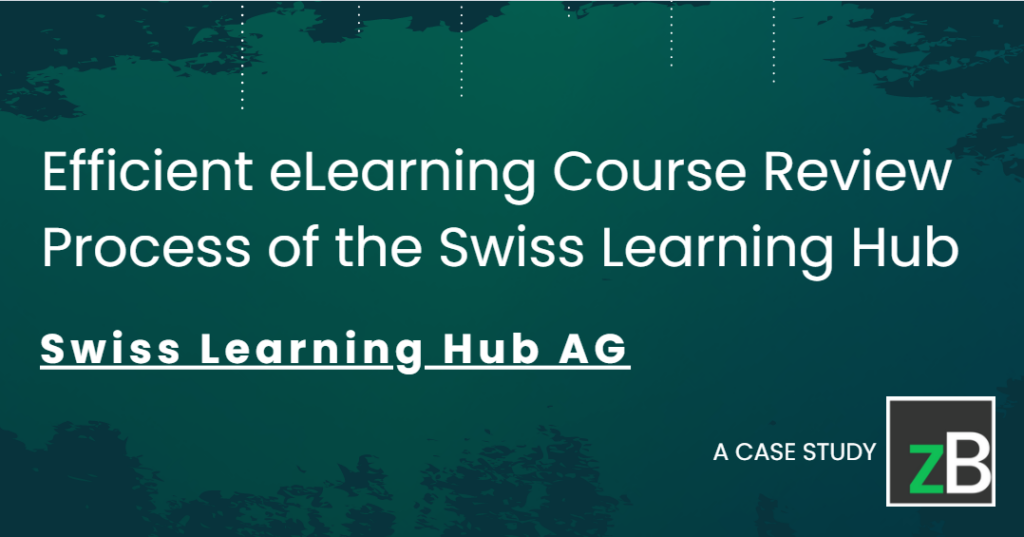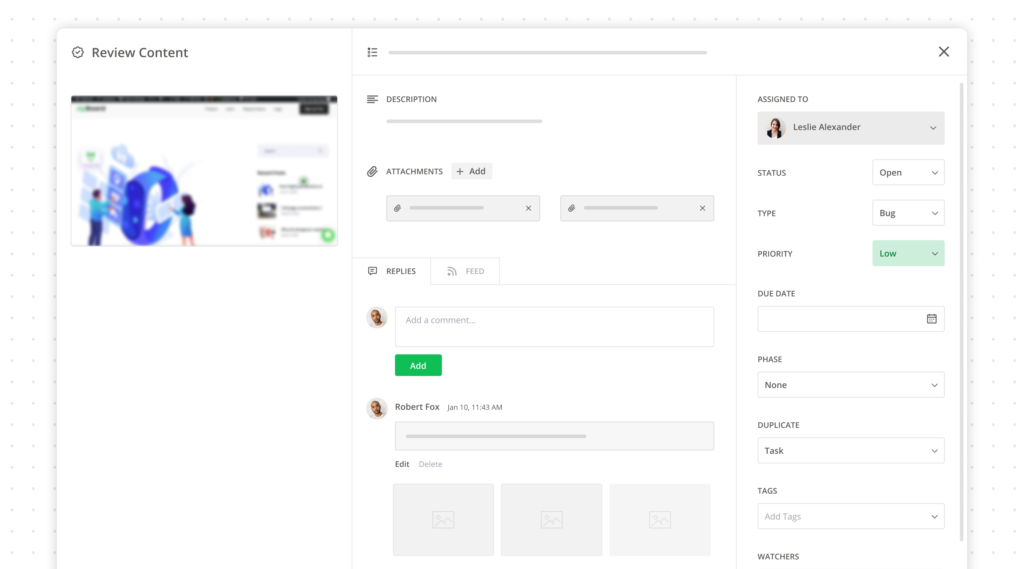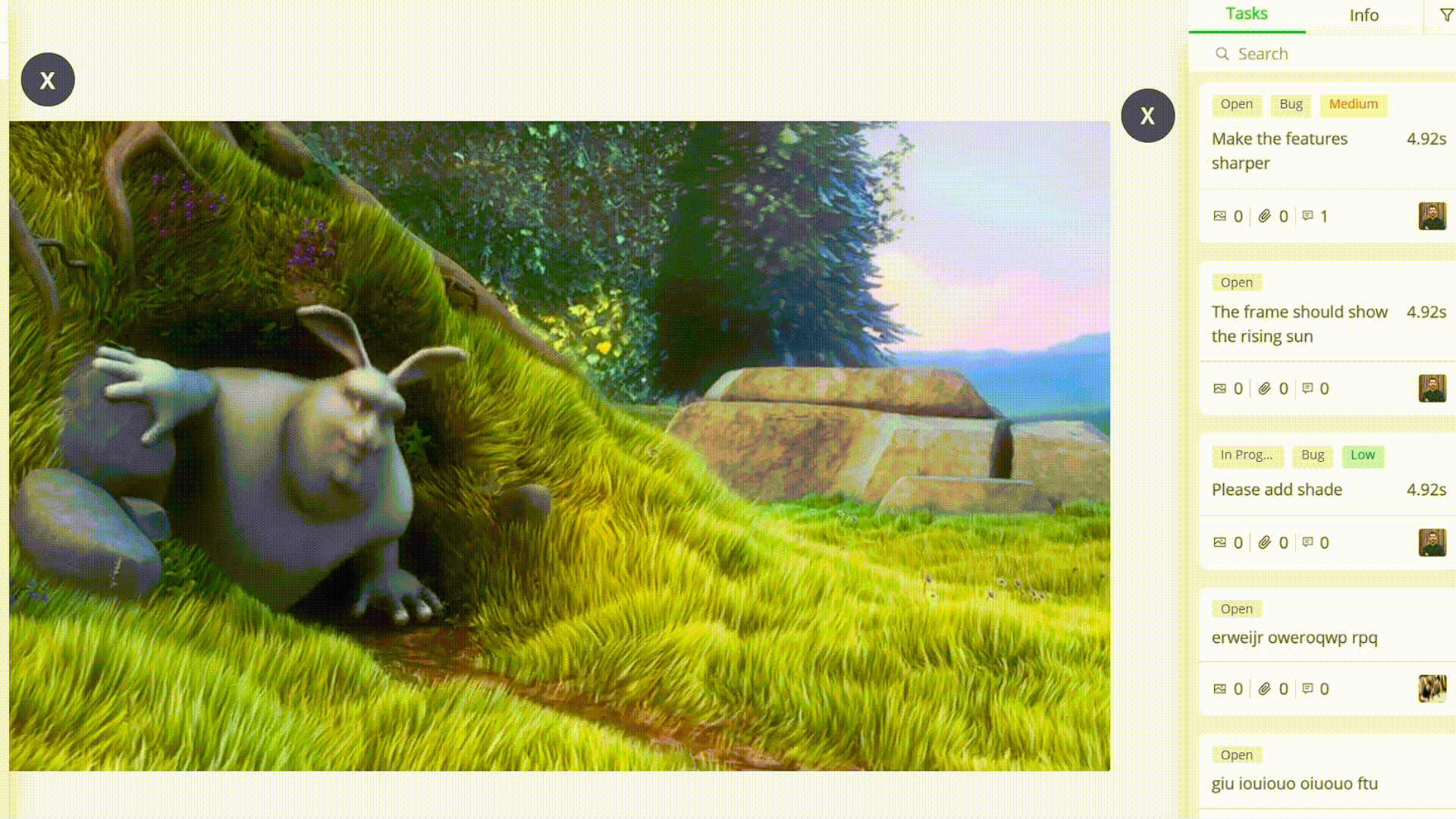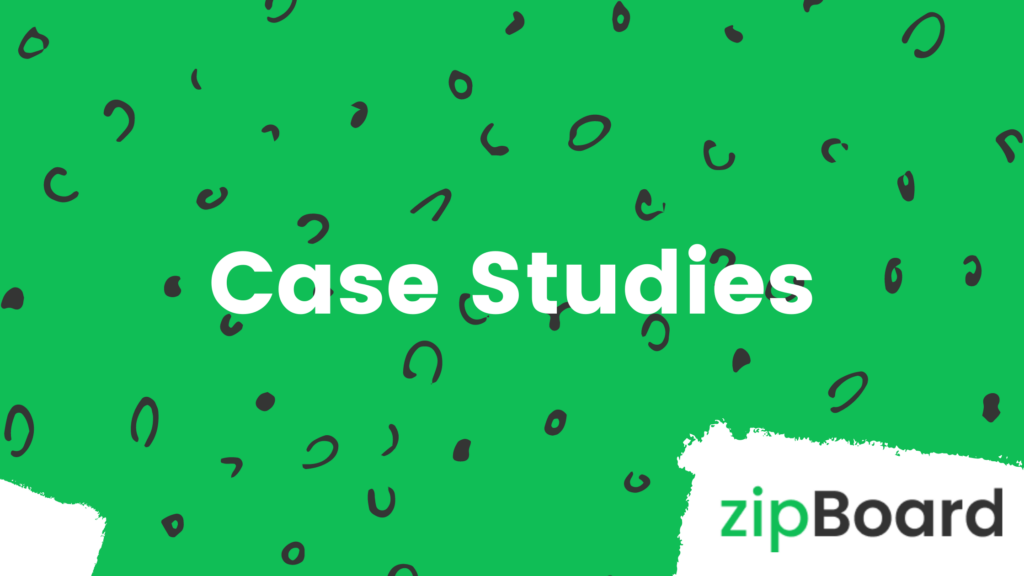
Efficient Learning Content Review Process of the Swiss Learning Hub
How Swiss Learning Hub uses zipBoard to efficiently manage their eLearning course review process and collaborate seamlessly with multiple collaborators.
Efficient Learning Content Review Process of the Swiss Learning Hub
Get behind the scenes with Swiss Learning Hub’s learning content review process and see how zipBoard helps with gathering visual feedback for their collaborators.

Problem statement
As the leading full-service provider of digital learning for vocational education and training, creating high-quality learning content and getting contextual feedback from multiple collaborators is a major challenge.
With zipBoard
The Swiss Learning Hub (SLH) team used zipBoard to get actionable feedback, in context. With clear roles, unlimited collaborators, and a clear designation of responsibilities, their team experienced highly effective bug tracking.
Bottom line
With the seamless integration of zipBoard in their learning content development, the SLH team noticed that they had optimized their collaborative processes in terms of billable hours and avoided sub-optimal quality of course. With their learning content, reviewed and delivered in a much more timely manner.
The Swiss Learning Hub, based in Zurich, offers consulting, training, and implementation services for basic vocational education, in-company training, and tertiary education. In basic vocational education and training, the Swiss Learning Hub is based on the dual system of Swiss vocational education and training. Founded by the CREALOGIX Group, it has worked nationally and internationally in the area of digital education and training.
Currently, we are using zipBoard to gain an overview of a project where each involved person has their own tasks in a given timeline. So, it has a lot to offer and is a good app.
Introduction
Swiss Learning Hub is a platform that provides vocational education. They have been around for more than two decades and have been building digital learning content for multiple organizations. Swiss Learning Hub is known for quality and speed when it comes to vocational digital learning content development.
Their process begins with a briefing, followed by conceptualization and cost estimation. After the stakeholders have signed off on the offer, the production and implementation of the eLearning course take place. The next step is eLearning quality assurance and both the internal and external (client) teams provide feedback. When the necessary changes are made, it is sent over to the clients for implementation and the process is capped with a debrief and invoicing.

Challenges faced during the learning content review process
The learning content review process takes up approximately 40% of all development time! In other words, the maximum amount of time is spent on the eLearning quality assurance process as compared to other phases of eLearning course development. Swiss Learning Hub faces quite a few challenges that make this process more difficult than it has to be.
The first challenge was related to collaboration. Getting feedback from the developers, creators, SMEs, designers, external stakeholders, guest reviewers, managers, and clients could be cumbersome. Email chains can get too long, scheduling calls can get difficult with the timezone differences, and texts just don’t cut it. (We’ve all been there, done that.)
The next challenge that was related to the learning content review process was the prioritization of the received feedback. After receiving feedback from various departments, they must be prioritized and assigned as a task to the concerned individual. It will make the process much more streamlined and the issues can be resolved fast.
On the other hand, Swiss Learning Hub develops around five eLearning courses, simultaneously. Making this a multi-faceted challenge. Suffice to say, the organization of the processes is paramount.
The above two challenges, which are experienced by most learning content development teams during the QA process, cost the most valuable thing: time.
A lot of time is wasted while getting on calls with various individuals for feedback. At the same time, appropriately prioritizing, assigning and tracking tasks possess its own share of challenges.
The time lost while circumventing those challenges can(and should) be utilized better. These “simple” challenges cost teams hours, if not days, in delay in the learning content review process.
Timely feedback from SME helps makes the learning content relevant for the learners, and makes it easy for Learning team to execute their projects faster.
– Head of Learning Solutions, Non-profit
Where zipBoard comes in
The Swiss Learning Hub team required a solution that will take care of the aforementioned problems. First, they must be able to gather visual feedback during the learning content review process in one place asynchronously. Then, they should be able to prioritize through the received feedback and assign it as tasks to respective members of the team. Finally, they must be able to track those tasks till they are completed.
Visual feedback
zipBoard enables its users to get feedback visually on multiple types of content, including eLearning courses. By using the annotation and screen recording features, collaborators and external stakeholders can give visual feedback during the learning content review process. It makes their comments more understandable as compared to plain text. The best part is, you can get feedback asynchronously! Significantly reducing those long email chains and endless Zoom meetings.
So they could now review their eLearning courses with contextual feedback. (Including eLearning courses built with tools like Adobe Captivate, Gomo, Articulate, etc.)

Unlimited collaborators
In a particular zipBoard project, the admin and/or the manager(s) can add unlimited collaborators, clients, and guest reviewers. As a result, all of the feedback will be collated in one place. This makes the process of prioritization easy. Furthermore, comments from reviewers can be converted to a task by the click of a button and can be assigned immediately.

Task management and bug tracking
After a particular comment has been converted into an actionable task, getting updates and tracking it is paramount. In conventional methods, it is done via messaging and emails where things always (eventually) get lost. With zipBoard, you can have discussions in the comments section of the task itself and can set deadlines to make tracking simpler.

Seamless integration with JIRA

The result: Timely completion of courses and streamlined learning content review process
Swiss Learning Hub chose zipBoard to deal with the above issues and much more. These are easily avoidable by using a tool like zipBoard. Even though the problems appear quite simplistic, they have huge effects on the eLearning development process.
Collaborative problems cost the most to eLearning teams in terms of billable hours and sub-optimal quality of course. Both of which can be easily avoided by making your eLearning review process streamlined with the right tools. zipBoard, a visual collaboration and bug tracking tool, helps with just that.

Webinar
Build your content review and QA process
See how you can organize your QA process to build a robust and adaptive content review process.
Watch Free WebinarPro tips
- Focus On Readability. The right font, in the right place, makes all the difference between a learner paying close attention to the content or ignoring it altogether.
Use A Mix Of Multimedia. To fully replicate classroom learning, you need eLearning content that combines images, videos, infographics, animations, and audio clips.
Construct A Story. By including a scenario in your eLearning content, you are helping learners relate to a real-world setting in which they will use the knowledge.
Check how others use zipBoard
Tell us how you use zipBoard
What unique challenge has zipBoard solved for you? We’d love to hear your story! Contact us @support@zipboard.co
Or haven't used zipBoard yet? Request a free demo or sign up for free and find out what’s possible.
Get Free DemoSign Up Free!©️ Copyright 2025 zipBoard Tech. All rights reserved.
